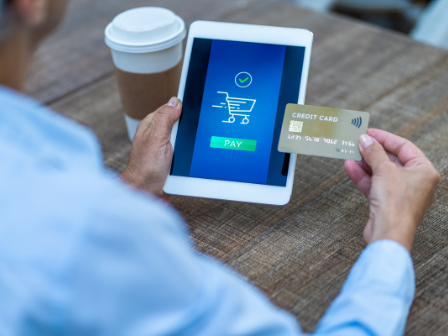Payments is big business for banks – over $2T globally to be more precise. And the digital payments business in the Middle East alone is over $200 billion. With so much at stake, knowing how to navigate the increasingly choppy waters created by new regulations and trends will ensure that leading banks in the region swim vs. sink.
I recently sat down with Andrew Haskell, Director and Product Line Manager at BNY Mellon for a fireside chat entitled Instant Payments: Turning a Compliance Requirement into a Business Opportunity that took place during Seamless Middle East earlier in the month. We discussed the current Middle East payments landscape and how banks and FIs in the region can derive business value whilst they comply with regulatory initiatives.
Payments Landscape
The Middle East is currently experiencing a payments renaissance of sorts—open banking, rapid cloud adoption, international payment optimization etc. Many of the changes happening in the region are being driven by regulatory mandates issued by the Gulf Cooperation Council (GCC), which includes the Kingdom of Saudi Arabia (KSA), the United Arab Emirates (UAE), Bahrain, Kuwait, Oman, and Qatar. But there are also initiatives, such as the movement from a cash economy to a digital one, that are being driven by consumers’ growing demand for payment dexterity – the ability to make and receive payments on their own terms.
This move to a more digital economy is not without its headaches. One of the clear points Andrew made was that Middle Eastern banks need to revisit their business model; their current consumer digital banking offerings are costing them dearly, to the tune of $200 per account that’s opened, on average. Clearly, there are still some kinks that need to be worked out, but the latent opportunity that digital transformation brings is ripe for those banks that are able to modernise in an efficient and cost-effective way.
Generating Business Value from Instant Payments
Instant payments, specifically, are being mandated in the Middle East, which means that in the next few years, all member nations of the GCC will need to be connected. But if we’re all special, none of us is, right? Likewise, if all banks in the Middle East are mandated to develop instant payment capabilities in the next few years, the service becomes commoditised. To derive any sort of business value, banks will need to implement value added services to their instant payment offerings to differentiate and provide customised user experiences.
There are also other, built-in benefits to instant payments that are worth noting:
1. Improved Liquidity Management
It’s no secret that banks want to hold on to their money as long as possible. So, why would any bank actively pursue instant payment capabilities of their own accord? Two reasons: One is the laser precision that instant payments give banks to send (not great) and receive (good) payments. In fact, banks and FIs should think of instant payments more as “precision payments” that allow them to hold payment until the absolute last moment. Second, the nature of instant payments suits multi-national banks that need to move money around quickly to support their global activities.
2. Efficient International Trade
The Middle East is a hub of global financial activity; being able to send payments across borders with as little friction as possible is vital to ensuring that the region continues to thrive, economically. Instant payments help grease the wheels for anyone needing to send or receive money, from businesses making payments to foreign entities to expat consumers wanting to send money to loved ones back home.
3. Payroll/billing (real-time disbursements)
Instant payments provide banks and their corporate customers with the convenience of being able to better control the timing of payments disbursement, such as payroll. With traditional payment schemes, particularly those set up with direct deposit, funds can be released earlier than necessary, resulting in less than ideal cash management.
There were many other thoughtful insights that came up during our chat that can help banks and FIs of all sizes develop a more robust instant payments strategy for 2021. You can listen to the entire fireside chat at your leisure, below.






